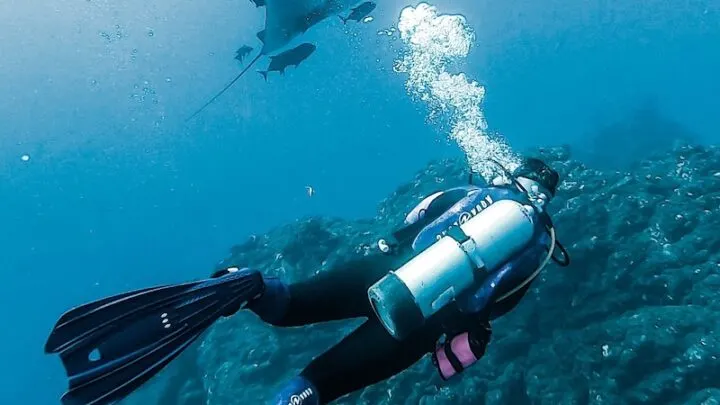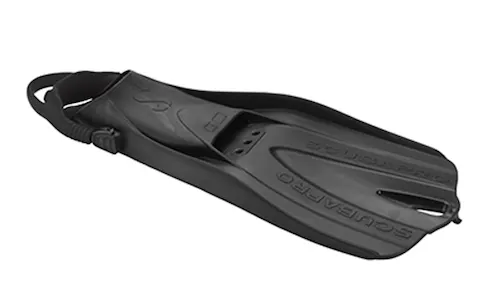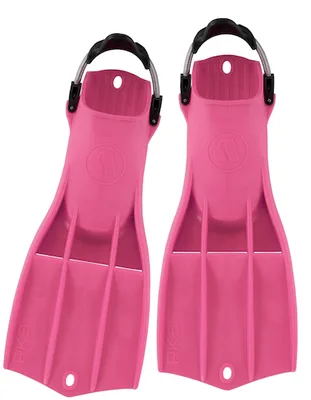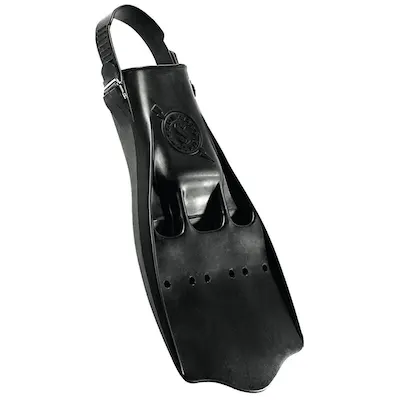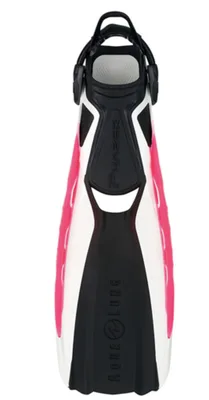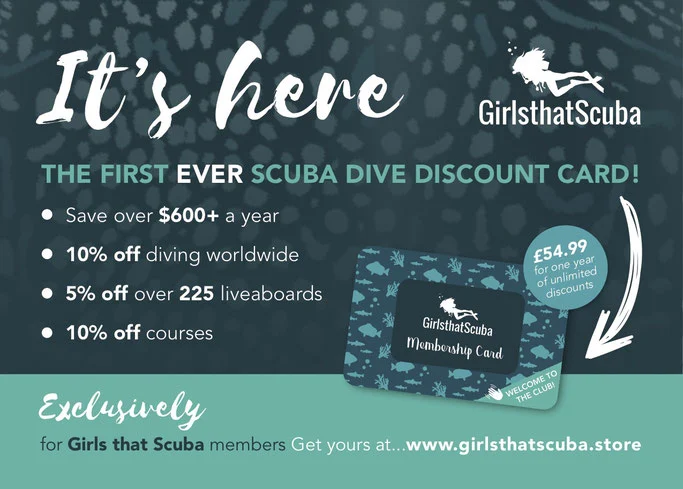You’re looking to buy new scuba diving fins? There’s more to think about than just whether or not you can get them in your desired colour (but if super co-ordinated gear is your thing read on – there are plenty of varied colour options on offer).
Investing in comfortable fins early on can make a huge difference to the enjoyment of your dives, but with so many varied styles to be found it can be challenging to choose the right ones. We’re here to help you think about what to consider when buying new scuba diving fins, and recommend some of the favourite fin styles from within our Girls that Scuba community.
What should I think about when buying fins?
As with shopping for any piece of scuba diving equipment, the best place to start is by asking yourself some questions about your dive habits. This will help you narrow down the styles you want to consider based on your needs and preferences.
Full-foot or open-heeled?
Although fins come in many weird and wonderful variations nowadays, the first decision you’ll probably want to make is between two main categories – whether to choose full-foot or open heeled fins. This refers to whether your foot fills the whole foot pocket and is enclosed at the back (a style you’ll likely be familiar with if you learned to dive in warm water), or whether the fin has an open back with a strap and is worn with neoprene boots. This will mostly be determined by the temperature you’ll be spending the majority of your time diving in; you’ll want the additional warmth of boots on your feet if you’re diving in cooler underwater climates. Boots are also practical and beneficial if you know you’ll be doing lots of shore diving and perhaps encountering rocky entrances and exits.
Will I be travelling with my gear?
You should also consider how much you’ll be travelling with your fins; the weight of different fin styles can vary hugely and can really impact your luggage allowance if you’re a holiday diver. Some styles are designed specifically to be lightweight in order to travel better – we explore some of the GTS favourite travel-styles below.
How heavy am I underwater?
The overall weight of your scuba diving gear isn’t just relevant when you’re travelling with it, though. When you’re underwater, diving with just a rash vest and a light travel BCD requires much less force to move through the water than if you’re scuba diving in a drysuit and carrying a heavy camera rig, for example. If you’re diving with heavier gear and more weight, you may want to consider a more powerful fin style in order to propel you through the water efficiently.
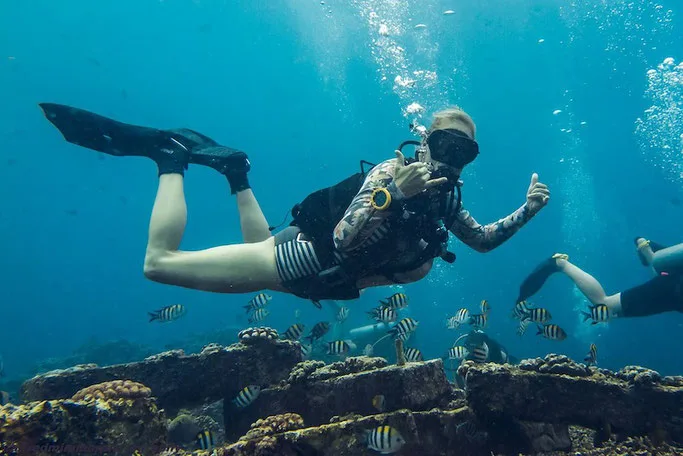
What conditions will I be diving in?
Additional power from your fins can also be useful in different conditions – particularly if you know you’re likely to experience some scuba diving in currents. Another underwater condition you may want to consider when it comes to fins, but which might not be the first to spring to mind, is visibility. If you’re diving in low-vis, carefully choosing the colour of your fins can help your buddy or group (or students) to find you much easier in the event that you end up separated. Colours such as white and yellow are much easier to spot from further away.
How do I like to kick?
If you’re a beginner scuba diver, you may not be that familiar with varied finning techniques yet. However, the more you develop your comfort underwater, the more you may want to explore different ways of propelling yourself through the water. Most of us first learn a flutter kick – a simple up and down motion moving mostly from the hip – and then perhaps explore a frog kick as we advance our skills. Frog kicking can then lead to more advanced finning skills, such as backfinning to move backwards through the water, and “helicopter turning” for more efficiency when turning around. Some fin styles are better suited to certain kicks than others; you would struggle to frog kick with a split fin, for example.
Once you’ve considered some of those questions, you may be forming more of an idea of what style of fin could be best for you. For more advice on the practical parts of buying new scuba gear – including where to shop, tips on trying before you buy, and how to research your purchases – dive into our full post here.
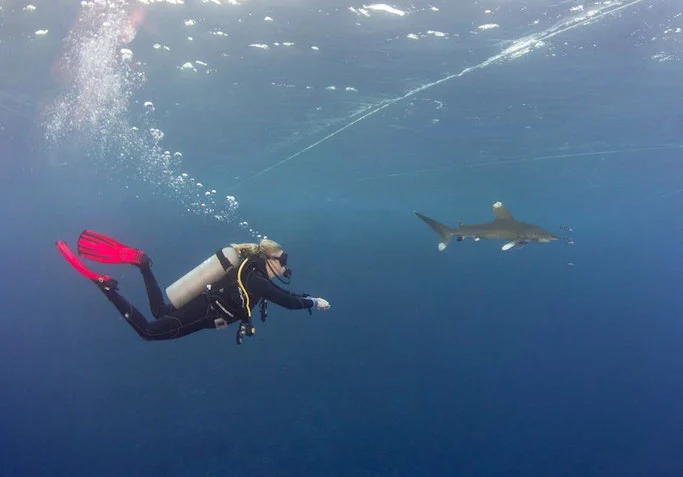
Fins with the GTS seal of approval
With over 40,000 members, our Facebook group holds a wealth of knowledge on which equipment is the best out there for female scuba divers. We’ve rounded up the most-loved scuba diving fins from our community’s recommendations, and helpfully arranged them for you by category.
Best for: Travel
Weighing in at just 1.2kg, Scubapro’s Go Travel Fins are a great option for a lightweight yet efficient travel fin. Constructed from Scubapro’s trademark Monprene material, these are pretty tough in spite of their small size, and can be worn either barefoot or with a neoprene sock underneath. They offer a great amount of comfort, as well as manoeuvrability and a surprising amount of power in the water. For a slightly upgraded (and fractionally heavier) version, also check out the Go Sport model – these offer the same construction but can accommodate boots if you’re likely to be shore diving or diving in colder waters, and come in a wider colour offering of black, white, yellow, blue, and turquoise.
Aqualung’s Storm fins are a similar offering, with a single-material construction and bungee strap designed for barefoot wear. The blade is compact yet strong, offering efficiency and power with every kick. Their size range has a slight advantage on the Scubapro Go, as these are sized inclusively from a 2XS up to a 2XL.
Best for: Power
If your questions on your dive habits concluded that you need more power, perhaps for scuba diving in currents or for carrying multiple cylinders, you may find one of these more powerful fin styles a good option to consider. For a fin with some force, look for a wider, stiffer blade with carefully placed channels.
The original and best-known fin of this style is the Scubapro Jet Fin. Originally designed for military use, they are extremely durable and efficient and are a favourite amongst divers the world over. The vented design “decreases drag on the up stroke and enhances thrust on the down stroke”, offering great movement whatever kick style you choose to use. Bear in mind that these fins are negatively buoyant, which some divers find difficult to adjust to but can be advantageous if you’re afflicted with floaty legs! One potential drawback, particularly for female scuba divers, is that the size range does not offer a Small and instead starts from a Medium.
A firm GTS community favourite which is a variation on this popular style is the Apeks RK3. They have a very similar design with the same benefits – vented for power and maneuverability – yet are ever so slightly lighter than the Scubapro Jet Fins and a slightly more compact shape. Their size offering also starts from a Medium, but some find the Medium RK3 smaller than the Medium Jet Fin. For more information and to check out the newest colour offerings, read our full article on the RK3 fins here.
One other similar style to consider is the OMS Slipstream, which again offers the same benefits, but this version is neutrally buoyant and considerably lighter.
Best for: Efficiency
When it comes to efficiency with fins, one style will come up again and again. Split fins are sometimes a controversial talking point in the dive community, but fans of the style find that they require a small amount of effort yet deliver a maximum amount of thrust. They require a slightly adapted kick, with a smaller flutter style working best, but once you master this and harness their power they can be a great option. They’re also often championed by divers who have less strength in their legs and require efficiency to compensate.
The firm GTS favourite split-fin style is the Atomic Aquatic Split Fin. They function by channeling water through the centre of the fin (the split), reducing drag and increasing efficiency. They also feature an anatomically correct foot pocket for increased comfort, and come in both a full-foot option for warmer waters and an open heel style for boots.
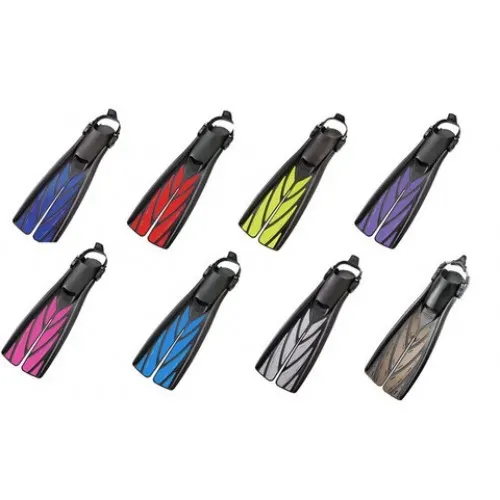
Best for: All-round
If you’ve concluded that you need a pair of fins which will work in many different environments, fear not – many of the GTS favourites are fantastic all-rounders. Here are three styles which you may want to try out.
The Aqualung Phazers are a popular beginner fin, as their paddle style is familiar but some features elevate them to be better than a completely basic model. The flexible rubber panel in the centre of the fin makes the most of the water flowing through the blade, and the “Hydro Power Channel” (the hole at the end of the foot pocket) allows that water to then flow through the fin for efficiency. This makes for a powerful and stable fin in the water.
Next up is the tried-and-trusted favourite, the Mares Avanti Quattro+. Four rubber channels built into a flexible material offer excellent propulsion through the water; they’re suited to any fin kick style, as well as being light enough to still travel with yet powerful enough to match a reasonably strong current on a dive. With a colour offering of White, Flame, Blue, Lime, Yellow and Black, there’s a shade to match every dive set-up and visibility requirement.
Last but certainly by no means least, many of our GTS members love the Scubapro Seawing Novas. Unusual looking at first glance, these innovative fins “produce a propulsive snap” thanks to the hinged point connecting the foot pocket to the blade. The Monprene material is flexible yet powerful, allowing the fins to glide through the water whether during a powerful flutter kick or a low-speed kick to maneuver in tight spaces. Much like the Quattros, the colour offerings can match any dive equipment – they come in Black, White, Blue, Turquoise, Purple and Yellow. Beyond the initial version, there’s now also a stiffer Gorilla variation, as well as a full-foot offering, so there’s a Seawing Nova style to suit every diver!
Which fins will you be purchasing next? Let us know in the comments below, and show them off on Instagram by tagging us @girlsthatscuba for your chance of being featured on our Share Saturdays!

